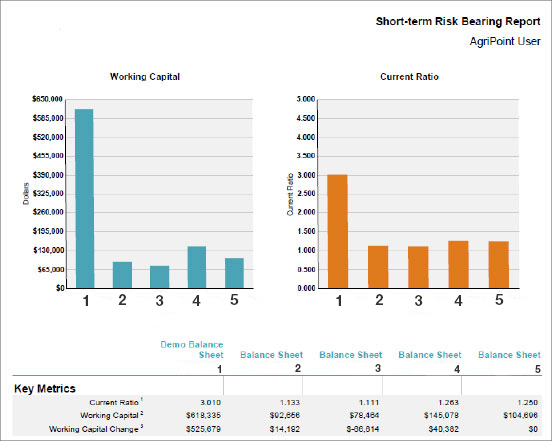A cash-flow projection is an important financial tool used to estimate the amount and timing of cash inflows and outflows. How a projection matches up with the actual cash flow in a given month tells whether you have excess funds to save for another month, use to pay down debt or jump on an opportunity.
It also helps you determine the size of an operating loan you will need.
As the operating cycle you’ve planned progresses, the projection is replaced by actual results. This information can alert you to changes you may have not expected. Additionally, having an accurate, near-real-time cash flow often improves the speed and quality of your operational decisions.
“In January, my dad was offered an opportunity to buy a pen of calves. He needed to know immediately,” said JR Wasserburger of Box X Ranch, a fourth-generation cattleman from Crawford, Neb. “Because we keep our cash flow up to date, I was able to look at our records via my phone and tell him the amount we had available in less than two minutes.”
Knowledge is power
That kind of knowledge is power, yet less than a quarter of producers prepare a cash flow statement, according to Bob Schmidt, Farm Credit Services of America (FCSAmerica) senior vice president. He listed the following as additional benefits to cash flow projections and updates:
- A roadmap to guide operation decisions
- Awareness that allows you to market commodities in a timely manner
- The root of financial acumen in any business, and particularly agriculture: It translates to the balance sheet, working capital; it is foundational to all other key metrics.
“Building cash flow projections is an important component of the work we do with young farmers and ranchers,” added Carl Horne, FCSAmerica vice president, customer solutions. “Starting an operating cycle with a plan and having the ability to keep that information updated is a critical management capability.”
“The importance of cash flow lies in monitoring operating performance during the year rather than after the fact,” said Dick Zach, FCSAmerica vice president, credit. “This allows you to determine whether adjustments need to be made proactively during the cycle.”
Cattleman Wasserburger can attest to that. “Every month, we monitor to see if we are on target to make our goals, and to see if our practices make sense,” he said. “We had planned to sell hay in January, but it didn’t happen. Our cash flow reminded us to see that it did in February.”
As another example, they typically kept steers from their cow/calf operation into January and sold them at 900-1,000 lb. “We saw that the last three years, we fed a lot of hay and feed to those cattle, yet the price we got was about the same as if we sold on December 1. This year, we did sell in December and saved on the hay and feed.”
The marketing link
Cash flow goes hand-in-hand with “cost of production,” added Bob Campbell, FCSAmerica senior vice president. “If you calculate your cost of production, you will know the price you need for your production to break even. Then, your cash flow will tell you when you need the income so you can proactively create the needed cash flow.”
Campbell recommends using your APH history or historical production averages for livestock, then updating figures through the season, both to reflect how production is shaping up and sales you have made. “Ask yourself, what’s my break-even today? How does that align with market prices during the seasonally strong period?”
“The goal is to not be forced to sell just to meet cash needs,” said Campbell. “Planning ahead and knowing your cash position will inform those decisions.”
The bottom line
“Cash is the lifeblood of an operation,” Zach declared. “Producers need to manage the flow of cash to cover normal expenses, debt service and living costs. Through timing of inventory sales, incoming payments and borrowed funds, a manager can assure there is sufficient cash on hand to cover those outflows.”
That’s the short-term goal at the Box X Ranch. The long-term goal is to keep the ranch in the family. “Our land was homesteaded in 1886; we still have the original document. We’d like to keep that in the family. My son will be the fifth generation on the ranch. I partly credit our record keeping. It opens the door to discussions we wouldn’t have otherwise. I’ve watched several friends and neighbors who hardly talk to their family and stand to lose that tie to the ground.”
“Investing the time to build and maintain a cash flow can pay big dividends for improving your management capabilities,” Horne noted. “Get the support and guidance you need to add this to your financial toolkit. Our financial experts are ready to help.”

Create balance sheets, cash flows and examine year-over-year trends in your business.
Manage and analyze your financials through AgriPoint®.
Financials, one of the free digital tools available to FCSAmerica customers through AgriPoint®, includes a worksheet with current assets and liabilities, followed by noncurrent assets and liabilities.
As you progress through the form, it automatically calculates your working capital and net worth.
When you are finished, you can save your balance sheet for future use and a click of a button will turn it into a PDF you can file or email. The online tool also runs what-if scenarios on how a purchase — or change in price — would affect your operation.
Access or set up your AgriPoint account.

